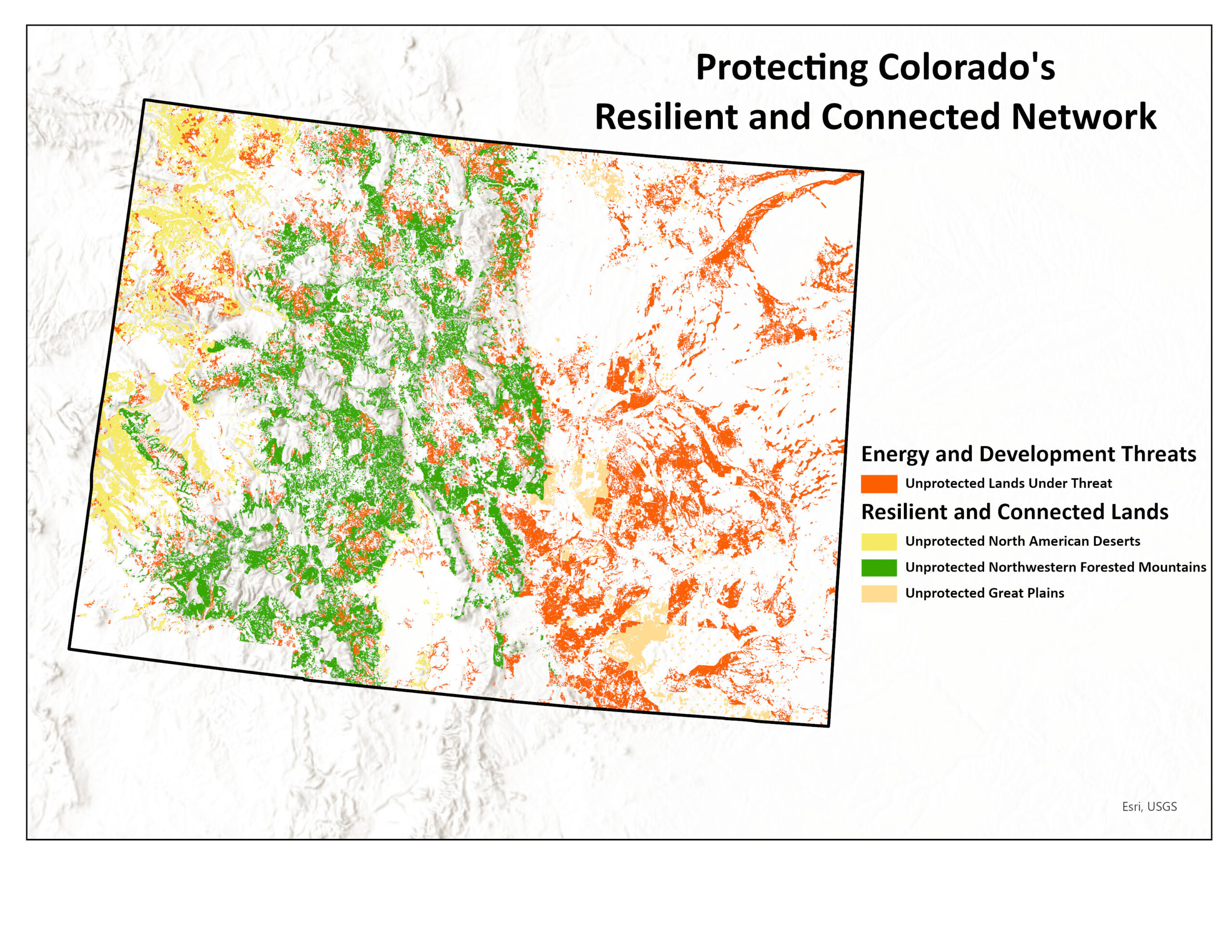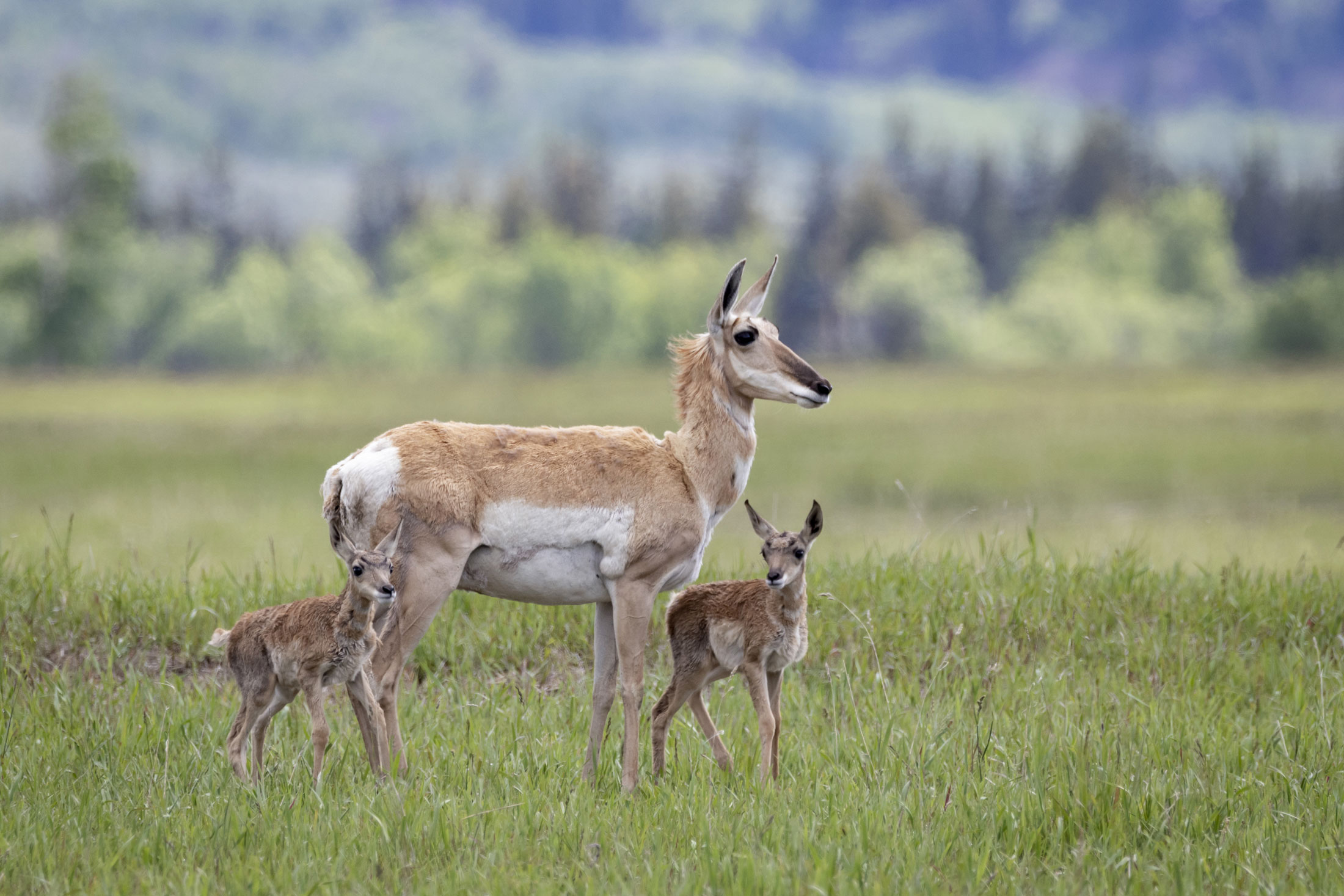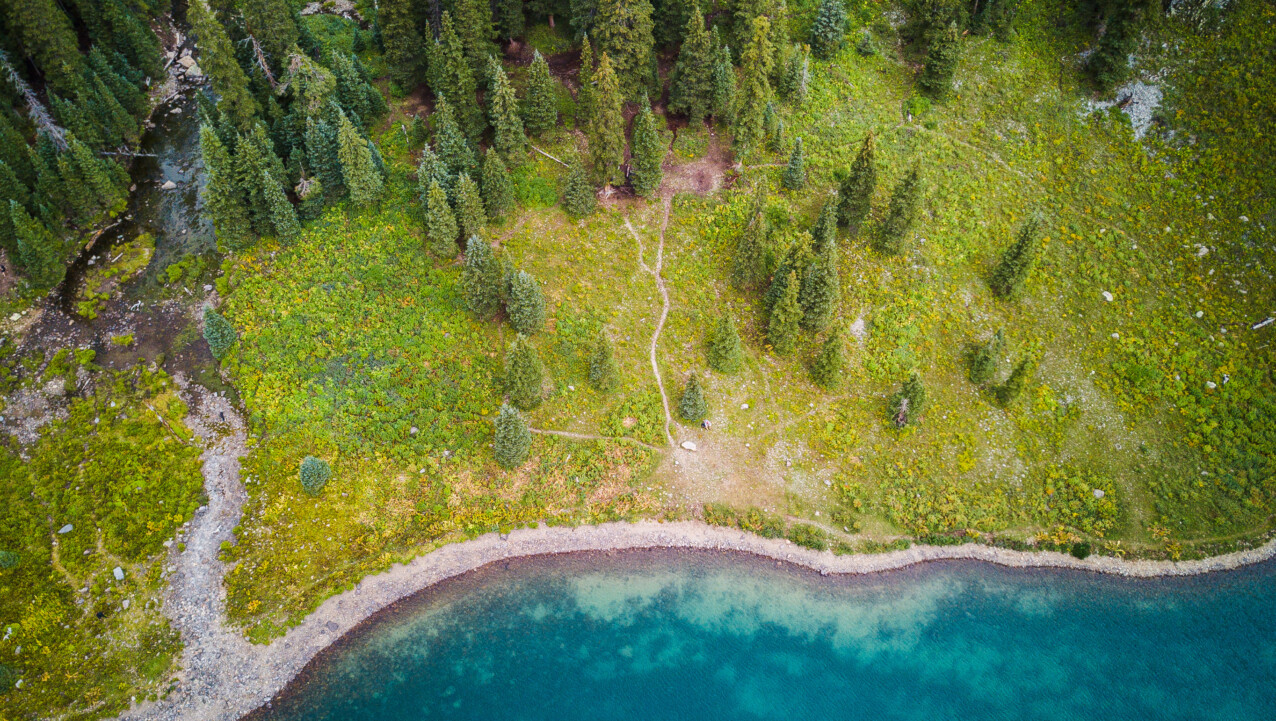April 2, 2024
Colorado is rapidly losing its most iconic asset: nature. Nearly one-third of Colorado’s lands have already been altered by human development –placing Colorado at the highest percentage of natural areas already lost to development among Western states. And with just 13% of lands protected from new development, the gap between lands protected and lands already developed is among the highest in the West.
The combined impacts of climate change, large-scale energy development, habitat degradation, and urban sprawl into areas of high wildfire risk are already being felt. As just one example of the challenges facing wildlife, America’s largest mule deer herd, found in Colorado, saw an abrupt drop from 2005 to 2017, declining by two-thirds from over 100,000 to roughly 32,000.
Habitat loss and fragmentation from industrial energy development and sprawl has been a primary contributing factor in the decline of this iconic mule deer herd. The health of big game species, like mule deer, is considered an indicator of the risks posed to the rest of Colorado’s wildlife and natural areas. In Colorado, we’re also seeing a reduction in public land access due to the spread of development and energy production. 2.3 million acres of public lands have already been leased to oil and gas companies. And a report on oil and gas leasing in Colorado suggests that taxpayers could face up to $371 million in reclamation expenses for these lands in the future.
Colorado must act more aggressively than other states to conserve its wildlife and outdoor way of life. Outdoor recreation and biodiversity are central to the legacy and economy of Colorado and the identity of Coloradans – something the state can’t afford to lose.
As a fast-growing, energy-producing state, Colorado has less time than other Western states to conserve wildlife and outdoor access. While the West loses a little over an acre of wildlife habitat and open space every few minutes, Colorado can chart a path as a leader among Western states in keeping the West’s great outdoors and wildlife habitats intact and healthy.
The West, particularly Colorado, are on the frontlines of a changing landscape and a changing climate, and yet our ties to the natural world underpin nearly every aspect of our lives and economy. We must chart an inclusive path toward the long-term sustainability of our natural world, and Colorado’s leadership will play a key role in that effort.
FUNDING LEVELS ARE INSUFFICIENT TO MEET THE CHALLENGE AHEAD
Significant amounts of new funding are needed to ensure that Colorado can offset the strain that development places on its iconic landscapes, biodiversity, and recreational opportunities.
A fall 2021 report by the Colorado Department of Natural Resources inventoried existing and new funding such as the Colorado Wild Pass, Future Generations Act, Wildlife Habitat Stamp Program, and Great Outdoors Colorado (GOCO) – and concluded that in the face of accelerating habitat loss and climate change, additional sources of conservation funding are needed.
The report did not estimate how much additional funding was needed, but given goals laid out by the administration and likely to emerge from the Colorado Conservation, Outdoor Recreation & Climate Resilience Plan (Colorado Outdoors Strategy) that calls for more state parks and land conservation, a substantial amount of increased funding is necessary.
WRA analyzed the amount of funding needed to successfully protect the most at-risk, high-value lands and offset the impacts from development, like oil and gas. To estimate the level of funding needed to protect Colorado’s outdoors, we first considered the lands that are both most at risk of development and of the highest value for conservation and habitat.
The Nature Conservancy developed a tool, the Resilient and Connected Network (RCN), based on the best available science. RCN is a proposed conservation network of representative climate-resilient sites designed to sustain biodiversity and ecological functions in a changing climate. It serves as a starting point for evaluating landscapes that are the most at risk of development and which lands would create the most impact on biodiversity, connectivity, and access if conserved. The Polis Administration relied on the RCN as scientific guide for the America the Beautiful initiative in 2021 and in developing the Colorado Outdoors Strategy. For these reasons, WRA has used the RCN network to better understand what Colorado must do to protect its most valuable habitats and landscapes.
The network shows that 51% of Colorado’s land base is still intact, meaning that there’s ample opportunity to protect lands that are valuable for wildlife, biodiversity, and recreational access.
However, also in Colorado, 8.75 million acres (approximately 13% of the state) are both under threat by new developments, like oil and gas or urban sprawl, and are completely unprotected.

Meeting this goal of protecting and restoring a subset of the most at-risk lands in Colorado could require up to $990 million in additional conservation funding by the end of the decade, significantly above the funding currently allocated to land conservation by GOCO and other land conservation programs for that timeframe. And that’s just to protect the most at risk lands – to protect all of Colorado’s lands in the RCN would require an additional $690 million.
Looking at the need for conservation funding another way – compensating for the effective loss in wildlife habitat by oil and gas drilling on all land types – would require approximately $150 million annually over the average 20-year lifespan of a well to offset the loss of habitat.
This means that even accounting for current land protection funding levels, Colorado needs to invest an additional $150 million annually to protect the best natural areas left and compensate for the impact of oil and gas drilling. Even if federal funding were to account for all additional needs for Colorado’s national public lands, Colorado still needs new State Parks and State Wildlife Areas to conserve land and wildlife habitat as well as respond to the growing boom of outdoor recreation. Colorado also needs greater funding to work with private landowners to permanently protect key habitat and boost public access agreements.
No matter how you look at it, there is a large gap in conservation funding.
Additional funding for these initiatives is needed if Colorado is going to chart the path for how Western states can conserve America’s great outdoors.

A SOLUTION FOR COLORADO’S FUTURE
The good news is that enough high-value natural areas still exist to help Colorado’s diverse wildlife weather the worst effects of climate change – if more funding is added now to existing programs at Colorado Parks and Wildlife (CPW) to conserve these lands via durable protections.
With the needed additional funding, CPW has the policy tools in place to protect these lands and more. Through programs like the Habitat Stamp Program, the state can meet this challenge and emerge as a national leader by creating more State Parks and Wildlife Areas, boosting voluntary incentive programs to work cooperatively with private landowners, restoring lands to compensate for those lost to oil and gas development, and preparing innovative leasing tools to protect lands from development – but the agency needs more money to effectively make this happen.
One of the most cost-effective strategies for mitigating climate change is to protect more connected and resilient land and waterways. Additional revenue should be prioritized on landscape and habitat conservation – primarily through durable, long-term legal protections from development.
Conserving our lands is also good for our economy and the Colorado way of life. Public lands and wildlife are a major contributor to Colorado’s economies, local businesses, and the draw for tourism across the state. The loss of lands to development and oil and gas threatens not only a core pillar of Colorado’s economy but Colorado’s identity both nationally and globally. Residents, businesses, and visitors alike are drawn to Colorado for its scenic beauty, wildlife, and recreational opportunities. We need a source of funding to ensure that these lands and habitats are protected, while also creating new state parks and wildlife areas.



